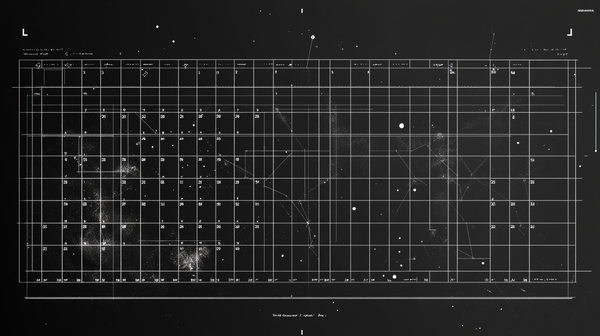When Narratives Evade Reality: A Structural Analysis
Untestable narratives process imagination as fact, creating developmental costs through feedback evasion. Viable alternatives maintain falsifiability while addressing meaning needs through engagement with actual conditions.

Humans naturally develop explanatory frameworks to make sense of complex phenomena, ranging from personal experiences to cosmic questions. These frameworks vary significantly in how they engage with evidence, feedback, and contradiction. This essay examines a specific category of explanatory systems: narratives structured to evade reality's constraints. It analyzes their functional characteristics, developmental implications, and alternatives. From simulation theories to spiritual frameworks, these systems share distinctive structural properties that limit their capacity for calibration against actual conditions. By understanding how and why these patterns emerge, what functions they serve, and how they affect system viability, we can develop more effective approaches to meaning construction that maintain developmental potential while engaging meaningfully with reality's constraints.
It's worth acknowledging that Autogenic Realism itself represents an explanatory framework, and as such, must remain open to the same structural assessment it applies to other systems. While it attempts to ground itself in observable patterns of systemic function rather than unfalsifiable claims, its utility ultimately depends on its capacity to generate testable predictions and remain revisable through engagement with actual conditions. This self-referential consistency, applying its own evaluative standards to itself, reflects the commitment to structural openness that distinguishes viable frameworks from closed explanatory systems.
The Pattern of Unconstrained Claims
Many popular explanatory frameworks exhibit a specific structural characteristic: they are organized in ways that make them impervious to disconfirmation while maintaining the appearance of explanatory power. Claims that "everything happens for a reason," that "consciousness creates reality," or that "we exist in a computer simulation" cannot be tested against reality's constraints. Their contribution to system viability cannot be determined because they're constructed as closed feedback loops that appear comprehensive while being structurally untestable.
By "structurally untestable," I mean specifically that these frameworks cannot generate predictions that, if contradicted by observation, would invalidate their claims. They fail to specify conditions under which they would cease to apply. They provide no clear criteria for what would constitute contradictory evidence.
This pattern emerges from specific tensions in how human cognitive systems process complexity and uncertainty. Our neural architecture evolved to detect patterns, construct meaning, and maintain internal coherence. When these functions encounter phenomena that exceed current explanatory models, they generate particular cognitive responses. This is not because humans are irrational. Certain response patterns offer quantifiable short-term advantages (reduced cognitive load, increased perceived coherence) while creating measurable long-term developmental constraints (reduced adaptive flexibility, decreased correspondence with actual conditions).
The False Coherence Mechanism
When cognitive systems encounter phenomena that exceed current explanatory capacity, they face a functional choice between acknowledging uncertainty and constructing illusory certainty. Uncertainty creates measurable system strain. It increases cortisol levels. It narrows attention. It requires greater cognitive resources to hold multiple possibilities simultaneously. Illusory certainty reduces these immediate physiological and cognitive costs, but at the expense of future adaptability.
False coherence can be operationally defined as the condition where a system presents as internally consistent and comprehensive while lacking operational interfaces with external feedback systems. Such systems cannot generate specific, non-trivial predictions that could potentially contradict them. This creates an appearance of completeness without the vulnerability required for actual calibration.
Consider how simulation theories function: they offer apparently comprehensive explanations for consciousness, quantum mechanics, and historical development by positioning them as artifacts of computational rendering. This generates an immediate reduction in cognitive load (measurable through reduced working memory demands) and increased sense of explanatory completeness (detectable through decreased information-seeking behavior). However, these benefits come at the cost of creating a system that, by its very construction, cannot be calibrated against external conditions.
The coherence provided is structurally false because its functional organization lacks feedback interfaces necessary for calibration, not because the narrative is necessarily incorrect (which remains undetermined). It creates the measurable appearance of integrated understanding without the vulnerability to constraint that actual integration requires.
Identity Protection and Cognitive Boundaries
Untestable narratives frequently serve as boundary protection mechanisms for identity systems. When a person's sense of self becomes attached to particular models of reality (measurable through increased defensive responses to contradictory information), contradictory evidence creates more than just a conceptual challenge; it creates an identity-level threat. This threat manifests physiologically and cognitively. The autonomic nervous system activates when core beliefs are challenged. Cortisol production increases alongside cognitive rigidity. Attention gets systematically deployed away from threatening information. Counter-arguments emerge without evaluation of their validity.
This explains the persistence of such narratives despite their operational limitations. They don't function primarily as explanatory systems but as boundary maintenance structures. A person who has incorporated "we are spiritual beings having a human experience" into their self-concept doesn't process contrary evidence as merely informational; their system processes it as boundary threat, activating defensive mechanisms designed to maintain structural integrity rather than information accuracy.
Not all identity structures exhibit this boundary dysfunction. Some systems maintain identity coherence while remaining open to revision. The key distinguishing features between these system types involve several structural differences. Adaptable systems anchor identity in learning processes rather than specific content. They define boundaries through information evaluation methods rather than conclusion protection. They process negative feedback as developmental opportunity rather than existential threat.
The more a system's identity depends on specific content rather than evaluation processes, the more it requires untestable narratives for boundary maintenance.
Self-Justifying Loops
What makes these narratives particularly resistant to revision is their recursive structure. They don't simply lack testability. They incorporate specific mechanisms that reframe contradictory evidence as confirmation. These mechanisms operate through identifiable cognitive processes that function together as a self-reinforcing system.
The first mechanism involves confirmation bias amplification, where ambiguous information gets selectively incorporated to support the existing framework while contradictory information gets reinterpreted. This operates through selective attention allocation (measurable through eye-tracking studies) and asymmetric criteria application when evaluating supporting versus contradicting evidence.
Alongside this runs evidential threshold shifting, where the standard of evidence required to support the narrative decreases while the standard required to challenge it increases to impossible levels. This creates a measurable gap between the quality of evidence accepted when it supports versus contradicts existing beliefs.
Further reinforcing these processes, semantic drift allows terms to gradually shift meaning to accommodate new information without acknowledging fundamental contradictions. This operates through context-dependent definition adjustment, allowing concepts to maintain apparent consistency while their operational meaning changes to avoid falsification.
Perhaps most powerfully, recursive explanation incorporates built-in justifications for why contradictory evidence actually supports the narrative. Skepticism becomes "part of the programming" in simulation theories or "part of the spiritual test" in metaphysical frameworks.
These aren't simply cognitive errors; they're structural features of how certain information systems maintain apparent coherence without correspondence to external conditions. The system preserves itself not through adaptive alignment with reality but through systematic distortion of the evaluation process itself.
The Developmental Cost: Measuring Impact on System Viability
While untestable narratives provide measurable short-term advantages in cognitive efficiency and emotional regulation, they impose specific developmental costs that can be operationally defined and observed.
Systems organized around untestable claims develop multiple interconnected dysfunctions that compromise viability. First, feedback integration failure creates structural blindness to disconfirming information. This becomes measurable through decreased attentional allocation to contradictory data, reduced ability to accurately recall information that challenges existing frameworks, and diminished capacity to update probability estimates based on new evidence.
This primary dysfunction enables resource misallocation, where cognitive energy gets directed toward maintaining narrative coherence rather than developing practical capability. The misallocation manifests as increased cognitive resources devoted to rationalization, decreased resources available for developing new behavioral responses, and measurable gaps between problem identification and effective intervention.
As these patterns persist, adaptive capacity reduction follows. Behavioral repertoire narrows to patterns that conform to the narrative rather than expanding to meet diverse conditions. This produces decreased behavioral flexibility across contexts, reduced capacity to generate novel responses to unprecedented situations, and persistence of ineffective strategies despite clear evidence of failure.
Finally, integration failure emerges as knowledge remains compartmentalized rather than functionally connected across domains. This becomes observable through inability to apply relevant information across contexts, maintenance of contradictory frameworks in different situations, and failure to recognize when principles from one domain apply to another.
These costs produce measurable dysfunction in system performance. A person attributing events to untestable spiritual design rather than testable causal mechanisms cannot calibrate their interpretations against outcomes. Their system maintains apparent coherence at the expense of developing the adaptive capacity necessary for long-term viability under changing conditions.
The Misalignment Between Imagination and Reason
The confusion between imagination and reason represents a specific boundary failure in information processing systems. Imagination—the capacity to generate internal representations not directly constrained by present conditions—and reason—the capacity to track causal relationships between models and outcomes—serve complementary functions in adaptive systems.
These functions can be operationally distinguished. Imagination generates possibilities without immediate constraint. Reason evaluates these possibilities against actual conditions. Viable systems maintain clear functional boundaries between these processes.
Problems emerge when imagination's products get processed as reason's conclusions, when the boundary between generative and evaluative systems breaks down. This isn't merely conceptual confusion; it's a measurable system-level regulatory failure. The dysfunction manifests through increased confidence in untested propositions, where subjective certainty becomes disconnected from objective verification. It creates reversed information flow, where conclusions determine what evidence gets considered rather than evidence shaping conclusions. It produces equivalence of generated and tested models, creating equal confidence in frameworks regardless of their testing history.
Several measurable factors contribute to this boundary failure. Emotional resonance asymmetry creates conditions where imaginative constructs addressing existential concerns generate stronger emotional responses (measurable through physiological indicators) than constrained models limited by available evidence. Pattern completion bias reinforces this tendency, as systems demonstrate preference for complete explanations over partial ones, even when completion requires speculation beyond available evidence. This tendency becomes observable through premature closure in problem-solving tasks.
Social dynamics further amplify these tendencies through status and identity reinforcement. Claiming access to comprehensive explanatory frameworks confers social and identity benefits, creating measurable incentives for maintaining untestable positions. Cognitive efficiency pressure contributes significantly, since comprehensive narratives reduce processing demands by providing ready-made interpretations. This efficiency becomes measurable through decreased cognitive load when information is pre-interpreted.
These factors create conditions where systems default to treating imagination's products as reason's conclusions, especially in domains where direct testing faces practical or conceptual limitations.
The Problem of Unfalsifiability: Operational Criteria
Unfalsifiability isn't simply a philosophical concern but a specific structural property with operational implications for system viability. A claim or framework is unfalsifiable when it cannot specify what evidence would demonstrate it to be incorrect. It contains built-in explanations that reinterpret any potentially contradictory evidence as support. It shifts its claims when challenged without acknowledging the modifications.
Falsifiability exists on a continuum rather than as a binary property. Systems can be assessed for their degree of falsifiability based on multiple dimensions operating together. Prediction specificity measures how precisely the system predicts future observations. Vulnerability to contradiction examines how clearly it identifies what would constitute contradictory evidence. Revision transparency evaluates how explicitly it acknowledges changes when incorporating new information. Testing opportunity assesses how readily its claims can be checked against observable patterns.
The more a system exhibits high specificity, clear vulnerability to contradiction, transparent revision, and ample testing opportunity, the more falsifiable it is. Consequently, the more it can demonstrate contribution to viability through tested correspondence with reality.
This isn't merely a technical distinction but a fundamental difference in how systems engage with their environments. Falsifiable frameworks remain calibratable through contact with actual conditions. Unfalsifiable narratives cannot be calibrated because their structure inherently lacks the interfaces necessary for meaningful feedback integration.
A Graduated Framework for Evaluating Belief Systems
Belief systems can be evaluated on a spectrum of falsifiability and adaptive function, rather than through binary classification. This graduated framework provides more nuanced assessment by recognizing different levels of engagement with evidence and constraint.
Fully falsifiable systems represent the highest degree of testability. These systems generate specific, testable predictions about observable phenomena. They clearly specify what evidence would contradict their claims, allowing for potential disconfirmation. When contradictory evidence emerges, they adjust rapidly, modifying core components to incorporate new information. They maintain systematic testing protocols that actively seek potential contradictions. Well-designed scientific theories and evidence-based medical practices exemplify this category. Their value stems from demonstrated correspondence with observable outcomes, allowing for high-confidence application in practical contexts.
Partially falsifiable systems occupy the next level, generating some testable predictions while maintaining untestable components. These systems specify limited conditions under which portions would be invalidated, creating partial vulnerability to disconfirmation. When contradicted, they adjust peripherally while core components change more slowly. Some economic theories demonstrate this pattern, making testable predictions about specific market behaviors while retaining foundational assumptions that resist direct testing. Developmental psychology frameworks similarly combine testable observations about behavior with theoretical constructs that cannot be directly observed. Their value emerges from practical utility combined with explanatory power, though their untestable components introduce potential distortion.
Contextually falsifiable systems generate predictions testable only under specific conditions. These systems require particular environments or states to evaluate their claims. They operate with limited testing opportunities constrained by context availability. Certain psychological interventions demonstrate this pattern, showing effectiveness only with specific populations or under particular treatment conditions. Context-specific practices in fields like education or organizational development similarly resist universal testing while maintaining testability within defined parameters. Their value exists primarily in their applicable domains, requiring careful boundary recognition to prevent inappropriate generalization.
Pragmatically unfalsifiable systems generate predictions that cannot currently be tested due to practical limitations, not structural resistance. These systems specify what would constitute contradictory evidence in principle, maintaining theoretical vulnerability to disconfirmation. They remain open to potential future testing as methodologies advance. Multiverse theories in cosmology exemplify this pattern, specifying conditions that would validate or invalidate them while acknowledging current testing limitations. Evolutionary psychology hypotheses about distant human history similarly propose mechanisms that shaped behavior while recognizing the limitations of testing historical claims. Their value lies in explanatory coherence and potential future verification, though they risk conflating theoretical elegance with correspondence to reality.
Structurally unfalsifiable systems represent the lowest degree of testability. These systems cannot generate specific predictions that could be contradicted by any observation. They contain built-in mechanisms that reinterpret any potentially contradictory evidence as support for the framework. They cannot specify what would constitute invalidating evidence even in principle. Many conspiracy theories operate this way, incorporating contradictory evidence as "proof of the conspiracy's reach." Some spiritual frameworks and simulation theories similarly resist any potential disconfirmation through their very structure. Their value lies primarily in psychological comfort and cognitive efficiency rather than adaptive correspondence with reality.
This graduated framework allows for more precise evaluation of belief systems based on their structural engagement with evidence and constraint. It recognizes that different systems serve different functions while maintaining clear evaluative criteria based on their capacity for calibration against actual conditions.
Developing More Viable Alternatives: Implementation Strategies
Addressing the limitations of unfalsifiable narratives requires developing alternative approaches that serve legitimate psychological and social functions while maintaining calibration with actual conditions. The following implementation strategies provide concrete steps for individuals and organizations seeking to enhance adaptive capacity through more falsifiable frameworks.
Strategy 1: Establish Clear Boundaries Between Imagination and Evaluation
The first implementation strategy involves creating explicit separation between generative and evaluative processes. Start by developing consistent language markers that clearly distinguish between speculative thinking and evidence-based conclusions. Use phrases like "I'm exploring a possibility that..." versus "The evidence indicates that..." to maintain clear boundaries between these different modes of thought. These verbal markers help both the speaker and listener track the epistemological status of different claims.
Implement structured documentation practices that visibly separate different types of knowledge. Create distinct sections in notes, reports, and planning documents for established facts, working hypotheses, speculative ideas, and unknown factors. This visual separation prevents imagination's products from being processed with the same confidence as tested conclusions. Organizations can formalize this practice by creating standardized templates that require explicit uncertainty markers, keeping speculative thinking visible rather than allowing it to blend with verified information.
Develop metacognitive tracking skills by regularly assessing the evidential basis for important beliefs. Practice questioning "How do I know this?" and "What would change my mind about this?" for key assumptions. This creates a habit of examining the sources and quality of evidence supporting different conclusions. Groups can implement structured review sessions where members explicitly examine the evidentiary basis for important decisions, ensuring distinctions between verified facts, reasonable extrapolations, and speculative possibilities remain clear.
Strategy 2: Build Provisional Knowledge Systems
The second strategy focuses on creating knowledge structures designed for revision rather than defense. Begin by developing explicit confidence calibration by assigning probability estimates to beliefs based on available evidence. Practice distinguishing between different levels of certainty, from speculative possibilities to well-established patterns. This creates structural recognition that knowledge exists on a spectrum of confidence rather than as binary certainties.
Maintain multiple working hypotheses simultaneously when addressing complex problems. Instead of committing to a single explanation prematurely, develop several potential interpretations of available evidence. Evaluate these alternatives based on specific criteria rather than intuitive appeal or narrative coherence. This practice prevents premature closure and maintains openness to multiple possible explanations.
Develop comfort with identifiable knowledge gaps by explicitly mapping what remains unknown alongside what has been established. Create "known unknown" inventories for important topics, documenting specific questions that current evidence cannot resolve. This practice transforms uncertainty from a threat to be eliminated into a mapped territory for potential exploration. Organizations can implement knowledge mapping processes that explicitly recognize current limitations while directing attention toward addressing critical gaps.
Establish regular revision cycles for important beliefs and models. Schedule periodic reviews of key conclusions to incorporate new evidence, rather than revisiting them only when contradictions become unavoidable. Make revision a standard practice rather than an exceptional event triggered by failure. Teams can implement "assumption testing" sessions where core beliefs are deliberately examined for continued validity, creating organizational permission to update previously accepted conclusions.
Strategy 3: Localize Meaning Construction
The third strategy involves grounding purpose and meaning in specific, testable contributions to identifiable systems rather than in universal narratives. Start by identifying concrete domains where your actions can create measurable impact. Define purpose through specific contributions to particular people, communities, organizations, or ecosystems rather than through abstract ideals. This grounds meaning in observable effects rather than untestable cosmic significance.
Develop metrics for tracking how actions contribute to system viability across multiple dimensions. Create feedback mechanisms that provide clear information about how behaviors affect identifiable outcomes. This connects meaning directly to observable consequences rather than to narrative consistency. Organizations can implement impact tracking systems that help members see how their work concretely affects the systems they aim to support.
Practice identifying value through demonstrated enhancement of system function rather than through alignment with abstract principles. Assess behaviors, policies, and interventions by how they affect coherence, adaptability, and development within specific contexts. This grounds evaluation in observable outcomes rather than in untestable claims about universal value. Teams can develop contextual assessment frameworks that evaluate success through multiple indicators of system health rather than through narrow ideological alignment.
Build purpose through ongoing engagement with specific challenges rather than through adherence to fixed meaning narratives. Find motivation in the process of addressing real constraints rather than in claiming access to ultimate truths. This locates purpose in the work itself rather than in abstract justifications for the work. Organizations can develop cultures that celebrate effective navigation of complexity rather than adherence to unchanging missions, keeping purpose dynamic and responsive to changing conditions.
Strategy 4: Develop Revision-Compatible Identity Structures
The fourth strategy involves constructing identity frameworks that can maintain coherence during belief revision. Begin by shifting identity anchors from specific content ("I am a person who believes X") to learning processes ("I am a person committed to understanding reality more accurately"). This creates a self-concept that maintains stability through continuity of approach rather than through fixity of conclusions.
Develop self-narrative structures that incorporate adaptation and development as central elements. Construct personal stories that highlight how growth has occurred through belief revision rather than through belief preservation. This reframes identity as an evolving system rather than as a fixed set of positions. Groups can develop cultural narratives that celebrate how their understanding has developed over time, treating change as achievement rather than as inconsistency.
Practice separating factual assessment from identity protection by deliberately examining evidence that challenges important beliefs. Create structured opportunities to engage with perspectives that contradict current positions, approaching this engagement as skills development rather than as threat management. This builds capacity to process contradictory information without identity disruption. Organizations can implement "steel manning" practices where members strengthen opposing arguments before responding, developing collective capacity to engage contradictions productively.
Measure identity strength through adaptive capacity rather than belief consistency. Assess personal development by examining how effectively you navigate changing conditions rather than by how firmly you maintain unchanging positions. This redefines strength from resistance to adaptation. Teams can develop assessment frameworks that recognize flexibility as a core capability, evaluating members by their capacity to adjust effectively rather than by their adherence to established positions.
Strategy 5: Create Supportive Social Environments
The final implementation strategy involves developing social contexts that reinforce calibration rather than confirmation. Begin by identifying or creating communities that value accuracy over certainty. Connect with groups that reward belief revision rather than belief defense, creating social reinforcement for adaptive rather than protective cognitive patterns. This establishes external support for internal development.
Develop explicit social norms around provisional knowledge and belief revision. Establish shared language and practices for updating previously held positions without loss of status. This creates cultural permission for growth rather than reinforcing static positions. Organizations can implement "update protocols" that provide structured processes for incorporating new information, making revision a normal and valued activity rather than an exceptional event.
Create recognition systems that reward effective calibration rather than confident assertion. Acknowledge and celebrate instances where people adjusted beliefs in response to evidence rather than maintaining consistency despite contradictions. This provides social reinforcement for adaptive rather than protective patterns. Teams can implement "calibration awards" that specifically recognize effective belief updating, creating positive social consequences for revision rather than for defensive consistency.
Establish structured protocols for constructive disagreement that separate ideas from identities. Develop discussion formats that allow for thorough examination of contradictory perspectives without triggering defensive responses. This creates spaces where ideas can be tested without threatening the people holding them. Organizations can implement designated "testing zones" where ideas are deliberately scrutinized without judgment of their proponents, creating safe spaces for rigorous evaluation.
Practical Implementation: Case Study
To demonstrate how these principles can be applied in practice, consider the following case study of shifting from an unfalsifiable framework to a more viable alternative:
Initial Framework: A person explains their recurring career disappointments through an unfalsifiable narrative about "the universe testing them before their destined success."
Developmental Process:
The developmental process unfolds through several interconnected phases. Through structured reflection, the person first engages in pattern identification, recognizing specific feedback-evading features of their explanation. Their narrative cannot specify what would constitute evidence against their "destined success." It systematically reinterprets each failure as confirmation of eventual success. It fundamentally prevents accurate evaluation of their approach by attributing outcomes to cosmic testing rather than to specific factors they could modify.
With these patterns identified, they undertake graduated belief restructuring by developing a more falsifiable framework. This involves creating specific, testable hypotheses about which career approaches might work better based on past experiences and industry patterns. They establish clear success criteria for each approach, defining observable outcomes that would indicate progress. They implement time-bounded experiments rather than open-ended "destiny" waiting, setting specific periods to test different strategies before evaluation. They maintain multiple working theories simultaneously about what factors influence their career trajectory, remaining open to various explanations rather than committing to a single narrative.
A crucial element in this transformation involves identity reconfiguration. They shift identity anchors from "person destined for success" (an untestable claim) to "person committed to effective learning" (a stance that can be verified through observable skill development). This shift fundamentally changes their relationship to feedback and outcomes. Failures transform from tests of character to sources of information. Success becomes measured by adaptation rather than by achieving a predetermined destiny. Their sense of worth becomes connected to how effectively they navigate challenges rather than to validation of a cosmic narrative.
The restructuring produces measurable changes observable as outcome improvements. They demonstrate increased behavioral flexibility across professional contexts, trying different approaches based on specific circumstances rather than applying the same "destined" strategy universally. They implement more rapid course correction when approaches prove ineffective, adjusting strategies based on results rather than persisting despite evidence of failure. They experience reduced emotional distress when facing setbacks, processing disappointments as information rather than as personal rejection or cosmic testing. They achieve accelerated skill development through more accurate feedback integration, focusing on specific capabilities they can enhance rather than waiting for destined recognition.
This case illustrates how shifting from structurally unfalsifiable narratives to more testable frameworks enhances system viability without abandoning meaning construction or purpose orientation. The person doesn't lose motivation or significance by abandoning their "destiny" narrative. Instead, they develop more effective engagement with actual conditions, achieving greater progress through calibrated adaptation than through untestable beliefs. Their sense of meaning becomes grounded in demonstrated development rather than in narrative consistency, creating sustainable flourishing through engagement with real constraints.
Conclusion: Beyond Untestable Narratives
Unfalsifiable narratives represent specific information processing patterns that are structurally immune to reality testing. They emerge not from simple error but from identifiable tensions in how human systems process complexity, uncertainty, and limitation. While they provide measurable short-term advantages in cognitive efficiency and emotional regulation, they fundamentally limit long-term viability precisely because they cannot be calibrated against actual conditions.
The alternative isn't rejecting meaning construction or embracing nihilistic materialism. It's developing approaches to meaning that maintain operational interfaces with reality. This requires enhancing both the structural capabilities that support provisional understanding and the identity configurations that can maintain coherence during revision.
Value emerges through demonstrated enhancement of system viability under constraint. Since unfalsifiable narratives are constructed to be structurally immune to constraint testing, they cannot demonstrate value contribution regardless of their internal coherence or emotional appeal. More viable meaning emerges through frameworks that remain open to disconfirmation—frameworks that generate testable predictions and remain revisable through engagement with specific conditions.
This approach doesn't guarantee truth, but it maintains the vulnerability to reality that enables genuine development. Meaning constructed through testable engagement with specific conditions may lack the apparent certainty of unfalsifiable narratives, but it offers something more valuable: the potential to contribute demonstrably to viability enhancement across systems and scales.
The path forward involves specific structural developments: establishing clear boundaries between imagination and evaluation, building provisional knowledge systems designed for revision, localizing meaning construction through concrete engagement with particular systems, and developing identity structures compatible with ongoing learning. These developments don't eliminate the human need for meaning and coherence; they ground these needs in functional viability rather than in narrative closure.
By developing these capabilities, individuals and organizations can construct meaning that remains calibratable through contact with actual conditions. This approach recognizes that sustainable development occurs through engagement with constraint, not through construction of constraint-proof explanations. The resulting frameworks may lack the comfort of unchanging certainty, but they offer something more valuable: the capacity for ongoing adaptation, development, and flourishing through responsive engagement with reality as we actually encounter it.





